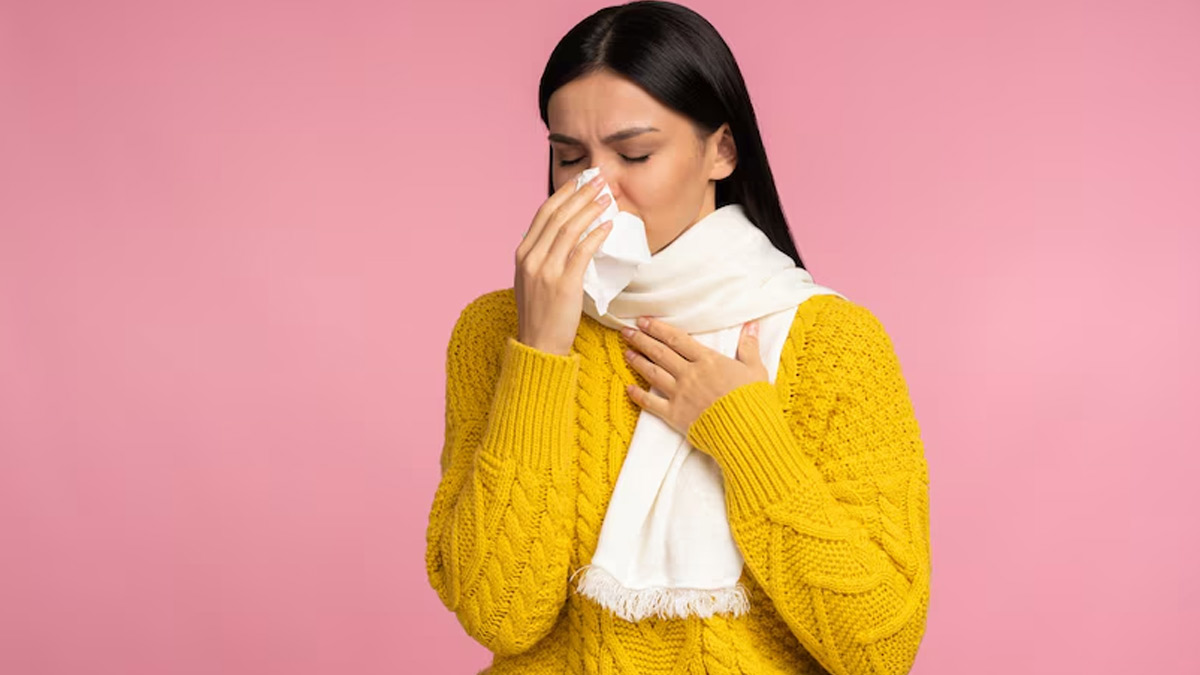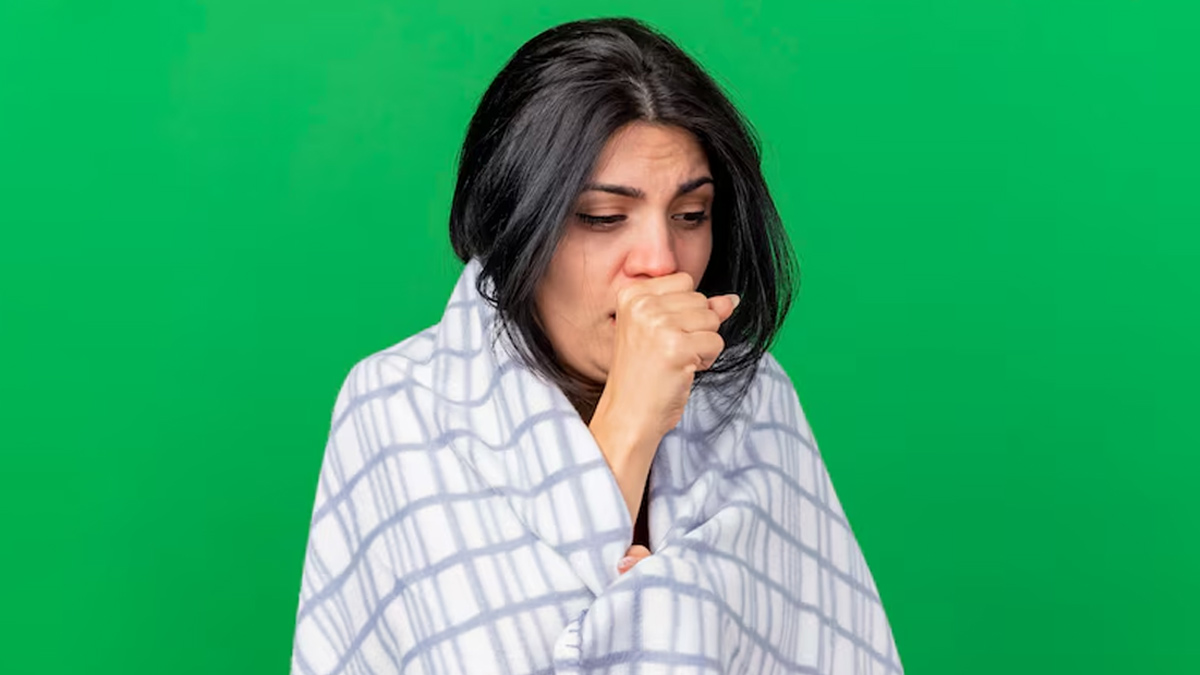
Winter is here, and as the temperatures are preparing to sink low, the saga of cold, cough, sore throat, and flu starts. Colds are among the most prevalent health issues, affecting people of all ages during winters. Caused by various respiratory viruses, colds are not only common but also highly contagious, spreading easily from person to person. Understanding the types, causes, symptoms, and preventive measures can help minimise their impact on daily life.
Table of Content:-
To understand the common types of colds, their causes and symptoms, OnlyMyHealth interacted with Dr Roohi Pirzada, MBBS, Consultant Physician in Mumbai.
Common Types of Cold Viruses
Colds are caused by a variety of respiratory viruses, each with its unique characteristics and behaviour. Dr Pirzada helped us understand the types in detail:
Rhinovirus
According to Dr Pirzada, “Rhinovirus is the most prevalent virus responsible for the majority of common cold cases.” It primarily infects the upper respiratory tract, thriving in the cooler temperatures of the nasal passages. This explains why colds caused by rhinovirus are more common during fall and winter months, when cooler weather prevails, and people tend to spend more time indoors, increasing transmission rates.

Parainfluenza Virus
The parainfluenza virus is a notable cause of respiratory illnesses, especially in children and individuals with weakened immune systems. According to research, parainfluenza can lead to more severe conditions beyond the typical cold, such as croup, which is characterised by a harsh, barking cough, as well as bronchiolitis and pneumonia. This virus primarily affects the upper respiratory tract but can also extend to the lower respiratory system in severe cases.
Also read: Causes Of Lingering Cough After A Cold And When To See A Doctor
Adenovirus
Adenoviruses are a group of viruses capable of causing a broad range of illnesses. While they are a known cause of the common cold, they can also lead to conditions like conjunctivitis (pink eye), gastrointestinal infections, and, in rare cases, severe respiratory infections. Adenoviruses are remarkably resilient and can survive on surfaces for extended periods, making them highly transmissible. “Common cold symptoms caused by adenovirus include nasal congestion, cough, sore throat, and fever,” Dr Pirzada noted.

Enterovirus
Enteroviruses are a group of viruses that include strains capable of causing cold-like symptoms, especially during late summer and early fall. These viruses are typically mild, presenting with symptoms such as runny nose, cough, and fever, but they can also cause additional issues like rash and, in children, hand-foot-and-mouth disease. Studies show certain strains of enteroviruses have been associated with rare but severe conditions, such as viral meningitis or myocarditis (inflammation of the heart muscle).
Human Metapneumovirus (hMPV)
Human metapneumovirus is a lesser-known but significant respiratory virus, particularly in young children, the elderly, and individuals with weak immunity. Closely related to the respiratory syncytial virus (RSV), hMPV can cause cold-like symptoms, including runny nose, sore throat, and cough. In some cases, the infection can progress to more serious respiratory issues, such as wheezing, bronchitis, or pneumonia. “hMPV infections are often seasonal, with outbreaks commonly occurring in late winter and early spring,” Dr Pirzada said.
How Colds Spread
Colds are highly contagious and primarily spread through respiratory droplets from an infected person’s cough or sneeze. These droplets can land on surfaces or be inhaled by individuals nearby. Direct contact with contaminated hands or surfaces and then touching the face can also lead to infection.
Also read: Blocked Nose Keeping You Awake? Here Are 7 Tips That Can Help
Symptoms of the Common Cold

Typical symptoms of a cold include:
Sneezing
Nasal congestion
Cough
Sore throat
Headache
Fatigue
Fever
In adults, cold symptoms usually resolve within a week, though recovery may take longer for children and the elderly due to weaker immune systems. Dr Pirzada notes that adults experience two to three bouts of colds annually, with peak occurrences between September and May.
Prevention Tips
While it’s impossible to eliminate the risk of catching a cold, adopting preventive measures can significantly reduce the likelihood:
Avoid Close Contact: Maintain distance from infected individuals.
Practise Good Hygiene: Always sneeze or cough into a tissue, discard it immediately, and wash hands thoroughly.
Clean Surfaces: Disinfect commonly touched surfaces, especially during cold season.
Stay Hydrated and Eat Well: A balanced diet rich in fruits and vegetables supports a healthy immune system.
Rest Adequately: Quality sleep is essential for maintaining immunity.
Managing Cold Symptoms

Dr Pirzada emphasises that treatment is largely symptomatic, aimed at alleviating discomfort:
Medications: Over-the-counter antihistamines and paracetamol can help reduce symptoms like runny nose, congestion, and fever.
Steam Inhalation: This soothes nasal passages, making breathing easier.
Saline Gargles: Warm saline water gargles relieve throat discomfort.
Rest and Hydration: Ensure adequate rest and drink plenty of fluids to support recovery.
Conclusion
Colds are an inevitable part of life, but understanding their causes and symptoms can help manage them better. As Dr Pirzada reiterates, preventive strategies such as maintaining hygiene, staying hydrated, and supporting the immune system can go a long way in reducing their frequency and severity. If symptoms persist or worsen, it’s always advisable to seek professional medical advice. By being proactive and informed, individuals can minimise the impact of colds on their daily routines and overall health.
Also watch this video
How we keep this article up to date:
We work with experts and keep a close eye on the latest in health and wellness. Whenever there is a new research or helpful information, we update our articles with accurate and useful advice.
Current Version